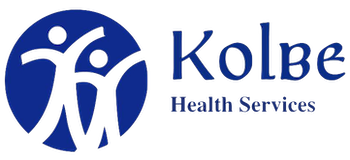
How Co-Occurring Disorders Are Treated
February 7, 2022Buprenorphine is one of the most recent tools available to physicians treating patients with OUD. The Food and Drug Administration approved its use in 2002, and it’s been used by Alabama addiction treatment clinics ever since.
This medication comes in several forms, including options with Naloxone to prevent misuse. So, who can benefit from using buprenorphine? To find out, let’s look at how the drug works.
How Do You Use Buprenorphine for Opioid Addiction?
Buprenorphine is just one part of opioid addiction treatment. Alabama clinics use a comprehensive combination of counseling and medication to help patients recover from OUD. While using buprenorphine for opioid addiction increases the likelihood of success and decreases the possibility of overdose, it alone doesn’t treat OUD. Instead, it’s a tool that helps patients manage withdrawal as they deal with other factors that contribute to their opioid use.
What Is Buprenorphine?
Buprenorphine is one of many opioid partial agonists substances often used in MAT. Opioid partial agonists activate the brain’s opioid receptors as an opioid would, but it’s not as strong. The result is effects similar to opioid use but much weaker. Patients who use buprenorphine for opioid addiction experience depressed breathing and euphoria.
That said, taking buprenorphine does come with side effects:
- Distress and irritability
- Cravings
- Constipation, vomiting, and nausea
- Fever
- Muscle aches and cramps
- Inability to sleep
How Does It Work?
Because buprenorphine produces the same effects as an opioid, it’s beneficial to patients coming off of opioid use. Chemical dependency is a real issue for individuals seeking treatment, as the detoxification process is painful and dangerous. Intense diarrhea and vomiting can cause dehydration, risking death if not treated.
Withdrawal symptoms can last up to seven days, during which patients will still crave the substance. For many, the hurdle of detoxification is too much to bear. Buprenorphine use reduces the intensity of cravings and withdrawal symptoms, giving patients a better chance at recovery.
Additionally, buprenorphine has a “ceiling effect,” which means the intensity of effects levels off at moderate doses. No matter how much individuals take over the threshold, they won’t get a more potent high. This cutoff diminishes the risk of overdose and makes buprenorphine a powerful resource in treating OUD.
What Does Buprenorphine Treatment Look Like?
Buprenorphine for opioid addiction is a fantastic breakthrough in the treatment of OUD, but it’s not suitable for everyone. To determine if this approach is a good fit for your situation, your doctor will consider several factors:
- If you have buprenorphine health conflicts
- If you are dedicated to following treatment safety guidelines
- If you’ve tried other MAT options
- If you have an OUD diagnosis
The treatment process has three phases: induction, stabilization, and maintenance.
Induction
The induction phase begins after patients have been off opioids for at least 12 hours. Since effects wane after 12 hours, most patients will experience withdrawal. While this may be uncomfortable, taking buprenorphine too early can actually accelerate the appearance of withdrawal symptoms. Patients take the first dose under a physician’s supervision.
Stabilization
With regular use, patients should experience fewer effects and cravings. At this time, physicians can switch patients to a lower or less frequent dose.
Maintenance
The maintenance stage requires different treatments depending on the patient. For example, some patients may wish to stop their medication, necessitating a medically supervised withdrawal. Others may require some form of medication for the rest of their lives. The goal is to prevent relapse, and for many people, that’s a life-long concern.
Where Can You Learn More About Buprenorphine Treatment for Opioid Addiction?
If you’re looking for an addiction treatment facility in Alabama, Kolbe Health Services may be the answer. Our MAT approach is proven to offer greater success than counseling alone. For more information about our services, give us a call at (888) 310-9011 or contact us online.
Image Source: Steve Heap / Shutterstock




